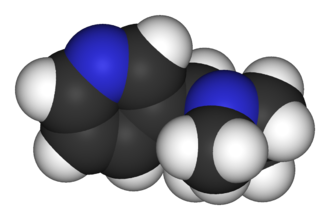April 2013 - Researchers at the University of California, San Diego School of Medicine have identified a previously unknown biological mechanism involved in the regulation of pancreatic islet beta cells, whose role is to produce and release insulin. The discovery suggests a new therapeutic target for treating dysfunctional beta cells and type 2 diabetes, a disease affecting more than 25 million Americans.
Writing in the April 11, 2013 issue of Cell, Jerrold M. Olefsky, MD, associate dean for scientific affairs and distinguished professor of medicine, and colleagues say a transmembrane binding protein called fractalkine, which typically mediates cell-to-cell adhesion though its receptor, CX3CR1, can also be released from cells to circulate in the blood and stimulate insulin secretion.
"Our discovery of fractalkine's role in beta cells is novel and has never been talked about in prior literature," said Olefsky. More importantly, the research highlights fractalkine's apparently vital role in normal, healthy beta cell function. In mouse models and in cultured human islets, the researchers found administering the protein stimulated insulin secretion and improved glucose tolerance, both key factors in diabetes. In contrast, fractalkine had no effect in mice or islets when the fractalkine receptor was deleted.
"Whether or not decreased fractalkine or impaired fractalkine signaling are causes of decreased beta cell function in diabetes is unknown," said Olefsky. "What we do know, without doubt, is that administration of fractalkine improves or restores insulin secretion in all of the mouse models we have examined, as well as in human islet cells."
Olefsky said fractalkine or a protein analog could prove "a potential treatment to improve insulin secretion in type 2 diabetic patients. It might also improve beta cell function or beta cell health, beyond simply increasing insulin secretion, since fractalkine prevents beta cell apoptosis (cell death) and promotes the beta cell differentiation program.
"If successfully developed, this could be an important new complement to the therapeutic arsenal we use in type 2 diabetes," Olefsky continued. "It is not likely to 'cure' diabetes, but it would certainly do a good job at providing glycemic control."
Co-authors of this study include Yun Sok Lee, Hidetaka Morinaga, and William Lagakos, UCSD Department of Medicine, Division of Endocrinology and Metabolism; Jane J. Kim and Ayse G. Kayali, UCSD Department of Pediatrics; Susan Taylor and Malik Keshwani, UCSD Department of Pharmacology; Guy Perkins, National Center for Microscopy and Imaging Research at UCSD; Hui Dong, UCSD Department of Medicine, Division of Gastroenterology; and Ian R. Sweet, Department of Medicine, University of Washington. Funding came, in part, from the National Institutes of Health (grants DK-033651, DK-074868, T32-DK-007494 and DK-063491) and the Eunice Kennedy Shriver National Institute of Child Health and Human Development/NIH (U54-HD-012303-25).
Source: University of California – San Diego









